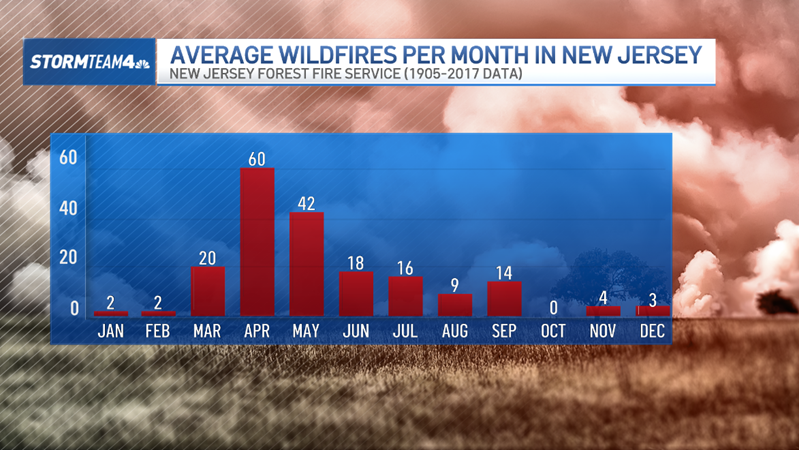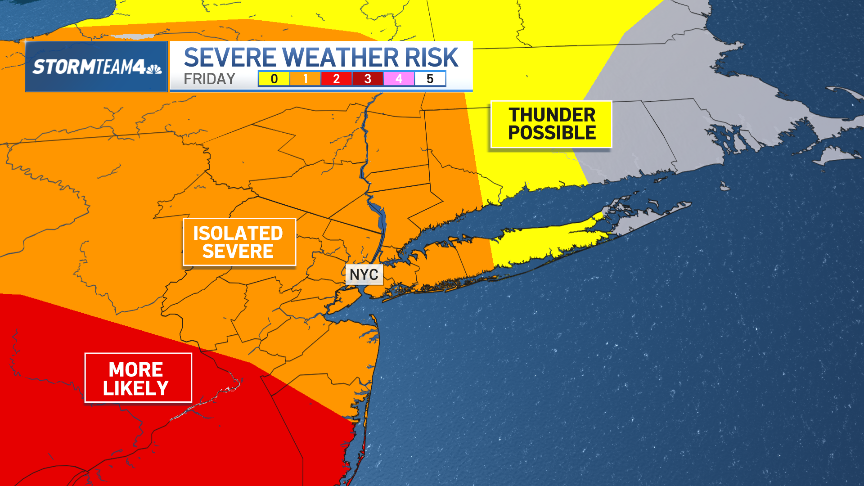Elevated Wildfire Danger: Tri-State Alert & NJ Peak Month
Brace Yourself: Elevated Wildfire Danger Grips Tri-State Area During NJ's Peak Fire Month
Introduction: A Burning Concern
April showers bring May flowers… and, unfortunately, an increased risk of wildfires in the tri-state area. It’s that time of year again when dry conditions, gusty winds, and lingering winter debris combine to create a perfect storm for wildfires. It might seem counterintuitive to think of wildfires in the spring, but trust me, it's a real threat. As April, New Jersey’s peak fire month, comes to a close, we need to be aware and take precautions. Let’s dive into what’s causing this elevated wildfire danger and what we can do about it.
What Fuels the Flames? Understanding Wildfire Causes
Wildfires aren't just random acts of nature; they're often the result of a specific set of circumstances. Several factors contribute to the elevated wildfire danger we’re seeing right now.
Lingering Winter Debris
Think of your yard after a long winter. It’s probably littered with dead leaves, fallen branches, and dried grass. These materials act like kindling, providing ample fuel for a fire to start and spread rapidly. These natural fuels combined with an ignition source, either human or natural, and you’ve got a recipe for disaster.
Dry Conditions
April can be a fickle month, swinging between rainy days and stretches of dry weather. Even a few days without rain can significantly dry out vegetation, making it incredibly susceptible to ignition. It's like a sponge that's been left out in the sun – it becomes brittle and easily catches fire.
Breezy Weather
Wind is a wildfire's best friend. It not only helps dry out vegetation faster, but it also carries embers long distances, spreading the fire far beyond its initial source. A seemingly small brush fire can quickly turn into a raging inferno when the wind picks up. These embers, carried by the wind, can land on dry vegetation far from the original fire, creating new hotspots.
Human Activity
Sadly, human activity is a major contributor to wildfires. Carelessly discarded cigarettes, improperly extinguished campfires, and even sparks from equipment can ignite dry vegetation. Think about it – a single spark from a lawnmower hitting a rock could be all it takes to start a devastating fire.
NJ's Unique Vulnerability: Why is New Jersey a Hotspot?
New Jersey, in particular, is susceptible to wildfires due to its unique landscape.
The Pine Barrens: A Tinderbox
The Pine Barrens, a vast expanse of pitch pine and scrub oak in southern New Jersey, is a particularly vulnerable area. The pitch pine is highly flammable, and the sandy soil drains quickly, leading to extremely dry conditions. It's like a giant, natural tinderbox just waiting for a spark.
Dense Population and Development
New Jersey is one of the most densely populated states in the US. This means that there’s a greater chance of human-caused ignitions, and more people living near areas prone to wildfires. This human-wildland interface, is a major risk factor.
Tri-State Area: A Regional Threat
The wildfire threat extends beyond New Jersey to the entire tri-state area, including New York and Connecticut.
Shared Weather Patterns
The tri-state area often experiences similar weather patterns, including periods of drought and high winds, which contribute to the elevated wildfire risk across the region. What happens in one state can easily impact the others.
Interconnected Landscapes
The forests and open spaces in the tri-state area are often interconnected, meaning that a wildfire that starts in one state can easily spread to another. We need to think of wildfire prevention as a regional effort.
Understanding Fire Danger Levels: What Do They Mean?
Fire danger levels are a crucial indicator of wildfire risk. They provide valuable information to both the public and emergency responders. Knowing what these levels mean can help you make informed decisions and take appropriate precautions.
Low, Moderate, High, Very High, Extreme
These are the most common fire danger levels, each representing a different level of risk. Low means the risk of wildfire is minimal, while Extreme means the risk is very high, and fires can start easily and spread rapidly.
Monitoring Tools: What the Experts Use
Fire officials use various tools and data to assess fire danger, including weather forecasts, fuel moisture levels, and historical fire data. By analyzing these factors, they can accurately predict the likelihood of wildfires.
Protecting Your Home and Property: Simple Steps, Big Impact
You might feel helpless against the threat of wildfires, but there's actually a lot you can do to protect your home and property.
Creating Defensible Space
Defensible space is the area around your home that you clear of vegetation and other flammable materials. This creates a buffer zone that can help slow or stop a wildfire from reaching your home. Think of it as building a protective wall around your house.
Maintaining Your Landscaping
Regularly mow your lawn, remove dead leaves and branches, and prune trees and shrubs. This reduces the amount of fuel available for a fire to burn. The key is to create a landscape that's less likely to ignite and spread fire.
Using Fire-Resistant Materials
When building or renovating your home, consider using fire-resistant materials, such as metal roofing, stucco siding, and tempered glass windows. These materials can help protect your home from embers and radiant heat. It's like giving your house a fireproof shield.
Staying Informed: Resources and Information
Staying informed is crucial during wildfire season. There are many resources available to help you stay up-to-date on current conditions and fire prevention tips.
Local News and Weather Reports
Pay attention to local news and weather reports, which will often provide updates on fire danger levels and any active wildfires in your area. These reports are your first line of defense against wildfire danger.
Government Websites and Agencies
Many government agencies, such as the New Jersey Forest Fire Service, provide valuable information on wildfire prevention and safety. Check their websites for tips, resources, and alerts. The state government is your go-to source for the most reliable information.
Emergency Alert Systems
Sign up for emergency alert systems, which will notify you of any immediate threats, such as wildfires or evacuations. These alerts can provide critical information when you need it most. Receiving those emergency alerts on your phone can save your life.
Safe Practices: Preventing Wildfires Every Day
Preventing wildfires is a community effort. By adopting safe practices every day, we can all help reduce the risk.
Properly Disposing of Cigarettes
Carelessly discarded cigarettes are a major cause of wildfires. Always extinguish cigarettes completely and dispose of them in a designated ashtray or container. Remember, a single discarded cigarette can start a catastrophic fire.
Safe Campfire Practices
If you're planning a campfire, be sure to clear a 10-foot area around the fire pit, keep water and a shovel nearby, and never leave the fire unattended. Always extinguish the fire completely before leaving. Campfires are great, but they can also be deadly if not handled properly.
Operating Equipment Safely
When operating equipment such as lawnmowers, chainsaws, or ATVs, be mindful of sparks. Avoid using equipment during dry, windy conditions, and keep a fire extinguisher nearby. These machines can easily start fires, so be extra careful.
The Long-Term Outlook: Adapting to a Changing Climate
Climate change is exacerbating the wildfire threat, making it even more important to take preventative measures. Warmer temperatures, longer droughts, and more extreme weather events are all contributing to increased wildfire risk.
Climate Change and Wildfires
As the climate changes, wildfires are becoming more frequent and intense. This trend is expected to continue in the coming years, so we need to adapt and prepare for a future with more wildfires. We need to start thinking about long-term solutions.
Community Resilience
Building community resilience is essential for mitigating the impacts of wildfires. This includes educating residents about fire safety, developing evacuation plans, and working together to protect our homes and communities. Working together, we can create stronger, more resilient communities.
Conclusion: A Call to Action
The elevated wildfire danger in the tri-state area during New Jersey’s peak fire month is a serious concern. By understanding the causes of wildfires, taking preventative measures, and staying informed, we can all help reduce the risk and protect our homes, communities, and natural resources. Let's all commit to being fire-safe and protecting the beautiful landscapes we call home. Stay vigilant, stay informed, and stay safe.
Frequently Asked Questions (FAQ)
- 1. What is the peak wildfire season in New Jersey?
- The peak wildfire season in New Jersey is typically during the spring, particularly in April and May, and again in the fall, from October through December. These are the times when conditions are often driest and windier, making the state more susceptible to wildfires.
- 2. How can I find out the current fire danger level in my area?
- You can find out the current fire danger level in your area by checking the website of the New Jersey Forest Fire Service or your local news and weather reports. These sources will provide updates on current conditions and any fire warnings or advisories.
- 3. What should I do if I see a wildfire?
- If you see a wildfire, immediately call 911 or your local fire department. Provide them with the exact location of the fire and any other relevant details. If the fire is small and you feel confident in your ability to extinguish it safely, you can attempt to do so using water or a shovel. However, your safety should always be your top priority.
- 4. Does homeowners insurance cover wildfire damage?
- Yes, most homeowners insurance policies cover damage caused by wildfires. However, it's important to review your policy to understand the specific coverage limits and any exclusions that may apply. Consider taking photos and videos of your property before a fire to simplify the claims process.
- 5. What are some fire-resistant plants I can use in my landscaping?
- Some fire-resistant plants that are suitable for landscaping in the tri-state area include succulents, such as sedum and aloe; deciduous trees, such as oak and maple; and shrubs with high moisture content, such as rhododendrons and azaleas. Be sure to consult with a local nursery or landscaping expert to choose plants that are best suited for your specific location and soil conditions.


